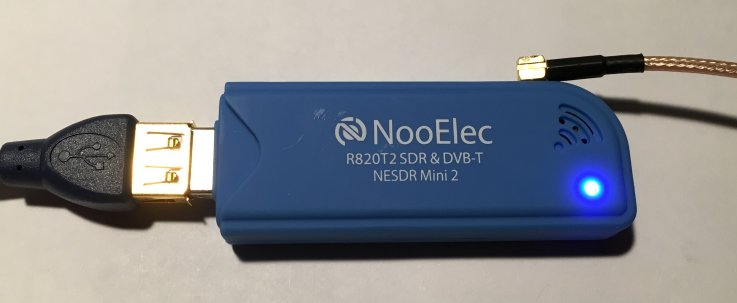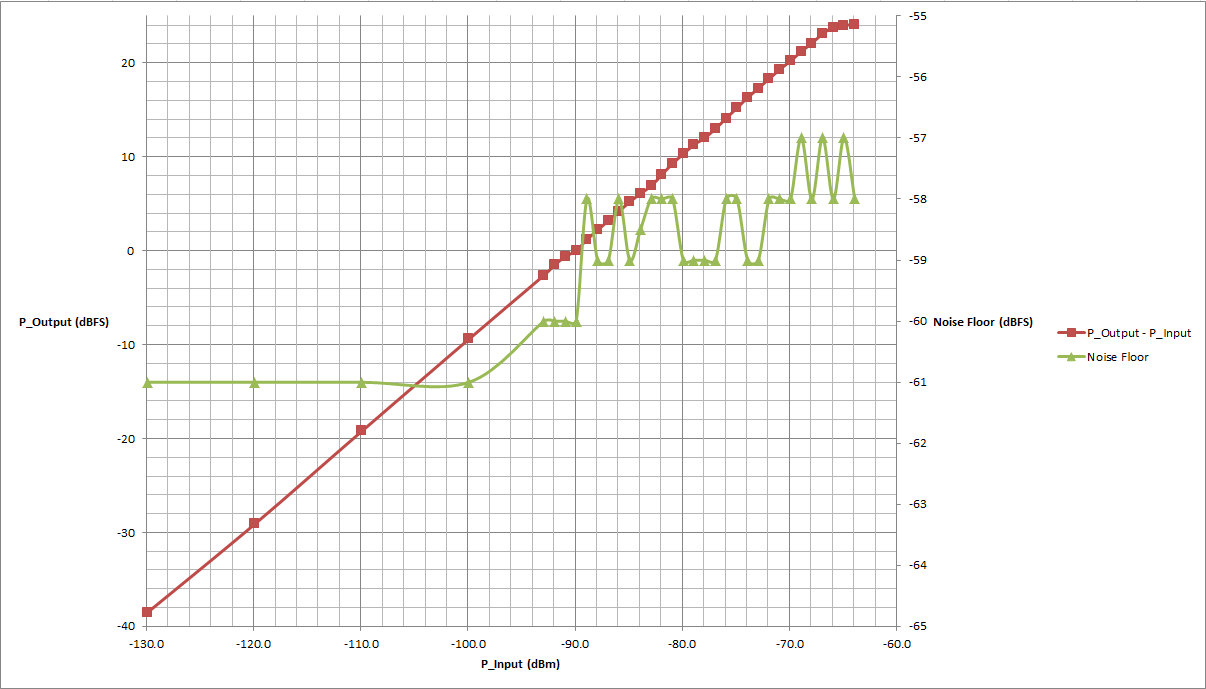Triggered by correspondence with a few local hams, I thought I’d try to learn a bit more about the RF characteristics of the NooElec R820T2 SDR dongle. I believe this is the second generation of their SDR dongle, the main difference being the use of the R820T2 instead of the R820 part.
I’d been monitoring the local AZ Department of Public Safety (DPS) channels for some time, but only slowly starting to play with gain settings. As well, I’m using the SDR# software and hadn’t spent much time with it, either, only getting to the point where I’d been able to integrate the auxvfo plugin and be able to listen to multiple radio channels simultaneously. Pretty cool especially when listening to the highway patrol, since they don’t talk much, so there’s not too much overlap when listening to 4 channels in parallel.
So I set the SDR gain to manual by turning off RTL and tuner AGC, and moved the slider to 49.6 dB gain. I then used a signal generator to step through the entire dynamic range of the receiver from the minimum level (actually the minimum level of the signal generator, -135.9 dBm) to beyond the -1 dB compression point. In all, this is a very impressive little radio for the $17.
The plot shows that the receiver is quite linear all the way from -136 dBm input to the -1 dB saturation point at about -65 dBm. The frequency accuracy of this particular dongle requires a +86 ppm oscillator shift, but once the dongle has warmed up, it stays very constant (within 1 ppm).
Something interesting for which I don’t have an explanation right now is the rise in noise floor at about -100 dBm. It’s not a big jump, but it holds constant at about -61 dBFS below -100, and then steps up gradually from there to the top of the range. I eyeballed the noise floor readings only to 1 dB precision, that’s why there’s the apparent step functions – that’s an artifact of the meter!
I was running SDR# at an FFT setting of 65k, Blackman Harris 4, and using a 12.5 kHz receiver bandwidth, order 500.
What was intriguing was that even at the minimum input signal, the SDR was still over 10 dB SNR. In fact, at -135.9 dBm, the leakage into the SDR from the cables was enough that I was seeing the NWS carrier about 290 Hz below the siggen. Not sure which is closer to correct, but in either case, that’s only 1.8 ppm difference.
Did notice that the NWS carrier appears to pull low with increasing audio modulation level – I think that this is a real thing and not something in the SDR. The pull is only 20 Hz or so.


